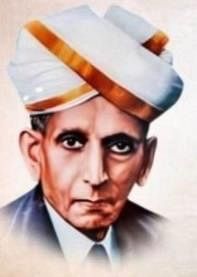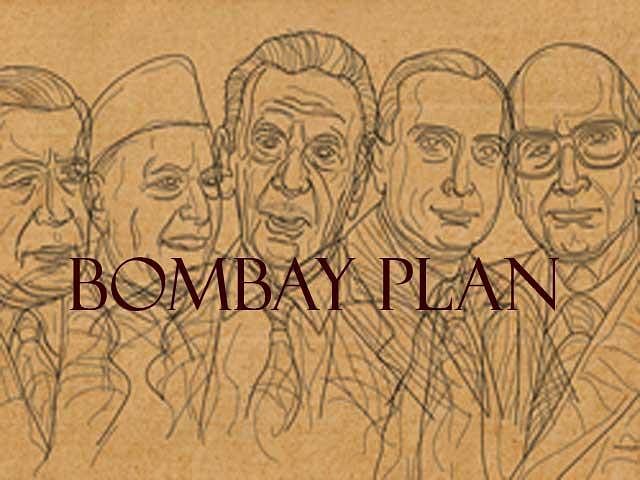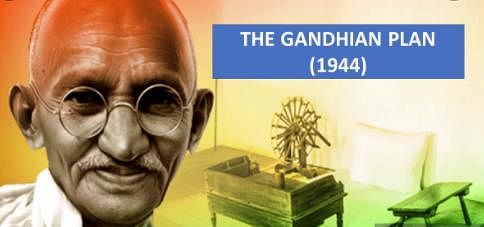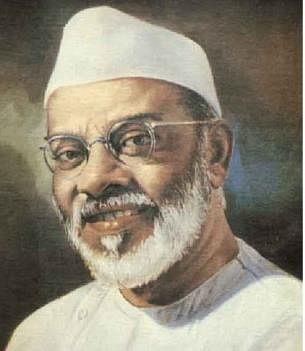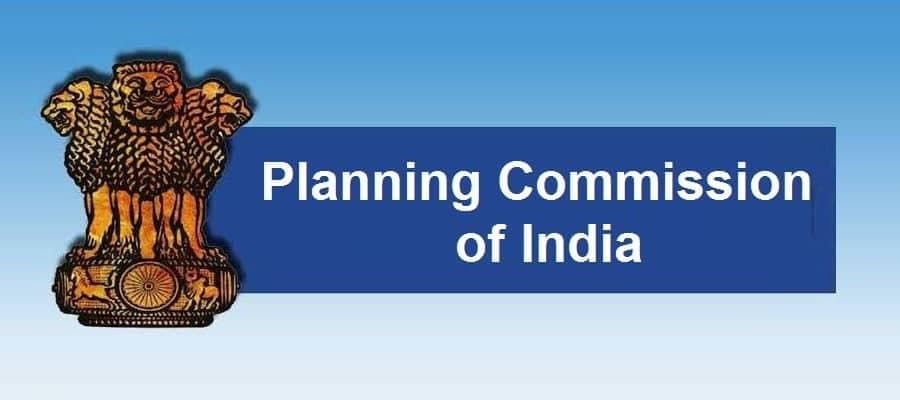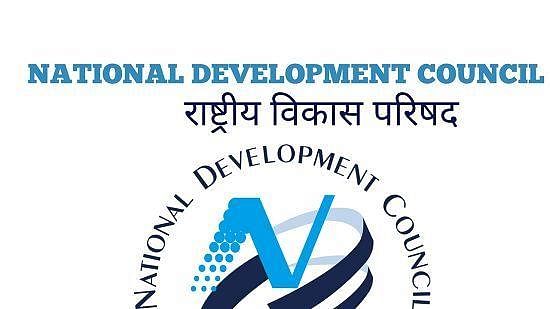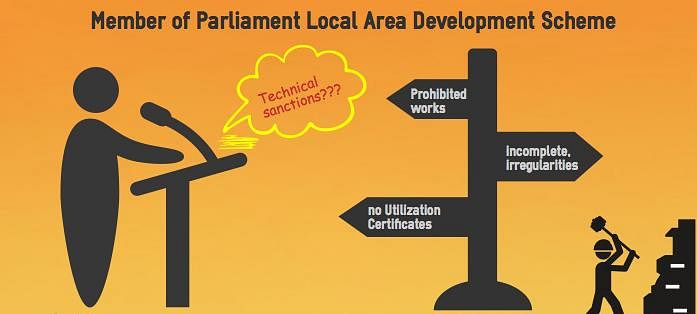Ramesh Singh Summary: Planning in India- 1 | Indian Economy for UPSC CSE PDF Download
| Table of contents |

|
| Introduction |

|
| Background |

|
| The FICCI Proposal |

|
| Major Objectives of Planning |

|
| Planning Commission |

|
| National Development Council |

|
| Central Planning |

|
Introduction
It was the Soviet Union which explored and adopted national planning for the first time in the world. After a prolonged period of debate and discussion, the First Soviet Plan commenced in 1928 for a period of five years.
Background
The Visvesvarava Plan
- The credit of proposing the first blueprint of Indian planning is given to the popular civil engineer and the ex-Dewan of the Mysore state, M. Visvesvaraya.
 M. Visvesvaraya
M. Visvesvaraya - Ideas of state planning were an exercise in democratic capitalism with emphasis on industrialisation—a shift of labour from agricultural to industries, targeting to double the national income in one decade.
The FICCI Proposal
- In 1934, a serious need of national planning was recommended by the Federation of Indian Chambers of Commerce and Industry [FICCI], the leading organisation of Indian capitalists.
- Its President N.R. Sarkar proclaimed that the days of undiluted laissez-faire were gone forever and for a backward country like India, a comprehensive plan for economic development covering the whole gamut of economic activities was a necessity.
- Voicing the views of the capitalist class, he further called for a high powered 'National Planning Commission' to coordinate the whole process of planning so that the country could make a structural break with the past and achieve its full growth potential.
The Congress Plan
- Though the Gandhians and some of the business and propertied representatives were opposed to commit the party to centralised state planning (including Mahatma Gandhi).
- It was on the initiative of the INC president Subhash C. Bose that the National Planning Committee (NPC) was set up in October 1938 under the chairmanship of J. L. Nehru to work out concrete programmes for development encompassing all major areas of the economy.
 Subhash C. Bose
Subhash C. Bose - The NPC was set up in a conference of the Ministers of Industries of the Congress-ruled States where M. Visvesvaraya, J.R.D. Tata, G.D. Birla and Lala Sri Ram and many others including academicians, technocrats, provincial civil servants, trade unionists, socialists and communists, etc., were also invited.
 J.R.D. Tata
J.R.D. Tata
Some of the important developments after the NPC was set up which prepared a foundation for coordinated planning in Independent India are given below:
(i) Post War Reconstruction Committee: Early in June 1941, the Government of India formed a Post- War Reconstruction Committee which was to consider various plans for the reconstruction of the economy.
(ii) Consultative Committee of Economists: A consultative committee of economists under the chairmanship of Ramaswamy Mudaliar was set up in 1941 as a 'think tank' to advise the four postwar Reconstruction Committees for executing national plan for the country.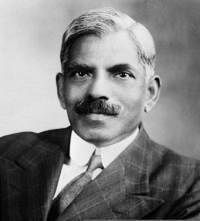
The Bombay Plan

- The Bombay Plan was the popular title of 'A Plan of Economic Development for India', which was prepared by a cross-section of India's leading capitalists.
- The eight capitalists involved in this plan were Purshotamdas Thakurdas, J.R.D. Tata, G.D. Birla, Lala Sri Ram, Kasturbhai Lalbhai, A.D. Shroff, Avdeshir Dalai and John Mathai.
- The Plan was published in 1944-45. Out of these eight industrialists, Purshotamdas Thakurdas was one among the 15 members of the National Planning Committee (1938).
- J.R.D. Tata, G.D. Birla and Lala Sri Ram were members of the sub-committees (29 in total) of the National Planning Committee.
The Gandhian Plan
- Sriman Narayan Agarwal formulated The Gandhian Plan in 1944. The plan laid more emphasis on agriculture.
- Even if he referred to industrialisation, it was to the level of promoting cottage and village-level industries, unlike the NPC and the Bombay Plan which supported a leading role for the heavy and large industries.
- The plan articulated a 'decentralised economic structure' for India with 'self-contained villages'.
- NPC that the Congress tried to articulate a different view on these issues, almost taking a break from Gandhi's ideas.
- The very first session of the NPC was brought to an impasse by J.C. Kumarappa (the lone Gandhian on the 15-member NPC) by questioning the authority of the NPC to discuss plans for industrialisation. He said on the occasion that the national priority as adopted by the Congress was to restrict and eliminate modern industrialism.
 J.C. Kumarappa
J.C. Kumarappa
The People's Plan
- In 1945, yet another plan was formulated by the radical humanist leader M.N. Roy, Chairman of the Post-War Reconstruction Committee of Indian Trade Union.
- The plan was based on Marxist socialism and advocated the need of providing the people with the 'basic necessities of life'.
- Agricultural and industrial sectors, both were equally highlighted by the plan. Many economists have attributed the socialist leanings in Indian planning to this plan.
- The United Front Government of the mid-nineties (20th century) and that of the United Progressive Alliance of 2004 may also be thought to have been inspired from the same plan.
The Sarvodava Plan
- The famous socialist leader Jayaprakash Narayan—the Sarvodaya Plan published in January 1950.
- The plan drew its major inspirations from the Gandhian techniques of constructive works by the community and trusteeship as well as the Sarvodaya concept of Acharya Vinoba Bhave, the eminent Gandhian constructive worker.
- Major ideas of the plan were highly similar to the Gandhian Plan like emphasis on agriculture, agri- based small and cottage industries, self-reliance and almost no dependence on foreign capital and technology, land reforms, self-dependent villages and decentralised participatory form of planning and economic progress, to name the major ones.
Major Objectives of Planning
(a) Economic Growth: Sustained increase in the levels of production in the economy is among the foremost objectives of planning in India, which continues till date and will be so in future, without any iota of doubt in it.
(b) Poverty Alleviation: Poverty alleviation was the most important issue which polarised the members of the NPC as well as the Constituent Assembly that a highly emphatic decision in favour of a planned economy evolved even before Independence. Several programmes have been launched in India directing the cause of poverty alleviation.
(c) Employment Generation: Providing employment to the poor has been the best tool of economics to alleviate poverty. Thus, this objective of planning in India comes naturally once it commits itself to alleviate poverty.
(d) Controlling Economic Inequality: There were visible economic inequalities in India at the interpersonal as well as at the intra-personal levels. Economic planning as a tool of checking all kinds of economic disparities and inequalities was an accepted idea by the time India started planning. Though Indian Planning has socio-economic objectives to fulfil, only economic planning was made a part of the planning process and social planning was left to the political process.
(e) Self-reliance: During the 1930s and 1940s, there was an ardent desire among the nationalists, capitalists and the NPC for making the economy self-reliant in all economic sphere. Self-reliance was defined not as autarchy, but as an effort to strike against a subordinate position in the world economy. As Jawaharlal Nehru asserted: self-reliance, "does not exclude international trade, which should be encouraged but with a view to avoid economic imperialism."
(f) Modernisation: Modernising the traditional economy was set as a foremost objective of planning. Specially, the agriculture sector of the economy needed an immediate inclusion of modern methods and techniques of farming, dairying etc. Similarly, in education too, India needs to go for inclusion of modern education system.
Planning Commission
- The National Planning Committee published its Report [1949], there was a firm inclusion of the need for 'Economic and Social Planning' in the Constitution, the stage was set for the formal launching of planning in the country.
- The whole economy at the national level, there was a need for a permanent expert body which could take over the responsibility of the whole gamut of planning, i.e., plan formation, resource aspects, implementation and review—as planning is a technical matter.
- Thus, in March 1950 the Planning Commission [PC] was set up by the government by a Cabinet Resolution.
Functions of the Planning Commission
- Make an assessment of the material, capital and human resources of the country, including technical personnel, and investigate the possibilities of augmenting such of those resources as are found to be deficient in relation to the nation's requirements.
- Formulate a plan for the most effective and balanced utilisation of the country's resources.
- On a determination of priorities, define the stages in which the plan should be carried out and propose the allocation of resources for the due completion of each stage.
- Indicate the factors which are tending to retard economic development, and determine the conditions which, in view of the current social and political situation, should be established for the successful execution of the plan
- Determine the nature of the machinery which will be necessary for securing the successful implementation of each stage of the plan in all its aspects.
- Appraise from time to time the progress achieved in the execution of each stage of the Plan and recommend the adjustments of policy and measures that such appraisal may show to be necessary.
- Make such interim or ancillary recommendations as appear to be appropriate either for facilitating the discharge of the duties assigned to it; or on a consideration of the prevailing economic conditions, current policies, measures and development programmes.
- With the commencement of the Tenth Plan (2002-07), the government handed over two new functions to the Planning Commission in 2002, namely
- To monitor the plan implementation with special reference to the process of 'economic reforms' with the help of the steering committees.
- To monitor the progress of various Central Ministries.
An Epitaph to the Planning Commission
- On January 1, 2015, the government formally abolished the PC by replacing it with the newly created body—the NITI Aayog.

- It was better to revive the PC or abolish it has been a matter of much debate among the discipline experts, politicians and the media. The debate, at times, had emotional tones, too.
The major recommendations of IEO on the PC are as follows:
- The PC be scrapped and replaced with the Reform and Solutions Commission (RSC), which should be staffed with experts with domain knowledge and kept free from any ministerial administrative structure.
- The RSC will perform three main functions:
(a) Serve as a solutions exchange and repository of ideas that have been successful in different aspects of development in various states and districts, and in other parts of the world.
(b) Provide ideas for integrated systems reform.
(c) Identify new and emerging challenges and provide solutions to preempt them. - The current functions of the PC be taken over by other bodies, 'which are better designed to perform those functions'.
- Since the state governments have better information about local requirements and resources than the central government and central institutions, they should be allowed to identify priorities and implement reforms at the state level, independent of mandatory diktats from the central institutions.
- The task of long-term economic thinking and coordination can be performed by a new body established to act solely as a 'think tank' within the government.
- The Finance Commission be made a permanent body responsible for the allocation of centrally collected revenue to the states and the finance ministry be tasked with the division of funds among the various central ministries.
National Development Council
- The National Development Council (NDC) was set up on August 6, 1952, by a Resolution issued from the Cabinet Secretariat.
- There were some strong reasons why the NDC was set up, which may be seen as follows:
(i) The Central Plans were to be launched in the states and the UTs with the participation of the state-level personnel. The Planning Commission was not provided with its own implementation staff for this purpose.
(ii) Economic planning as a concept had its origin in the centralised system (i.e., Soviet Union). For India, to democratise/decentralise the very process of planning was not a lesser task/challenge than promoting development itself.
(iii) In the constitutional design of the federal rigidities it was necessary to provide the whole planning process a unified outlook. The NDC serves the purpose of diluting the autonomous and rigid federal units of the Union of India. - The NDC may be regarded as one of the most significant steps taken for promoting understanding and consultation between the Union and the State Governments on planning and common economic policies.
- The 'Administrative Reforms Commission', the NDC was reconstituted and its functions redefined by a Cabinet Resolution on October 7, 1967.
NDC vs GC
- At the level of composition the NDC and Governing Council (GC) of the Niti Aayog look different in only one way — members of the Niti are not its members while the members of the PC used to be the members of the NDC.
- The core objective for both but the way it was/is done was/is better in case of the GC. The opinion of the GC is necessary for the desired functioning of the Niti as the former is an integral part of the latter. This way the GC looks a better body in comparison to the NDC. This rationale gets doubly vetted by the Government's belief that the Niti is 'State's best friend at the Centre'.
Central Planning
The Centre has launched three such plans and the government have maintained implementation.
The three central plans are
1. Five-Year Plans
- First Plan - The period for this plan was 1951-56. As the economy was facing the problem of largescale foodgrains import (1951) and the pressure of price rise, the plan accorded the highest priority to agriculture including irrigation and power projects
- Second Plan - The plan period was 1956-61. The strategy of growth laid emphasis on rapid industrialisation with a focus on heavy industries and capital goods. The plan was developed by Professor Mahalanobis.
- Third Plan - The Plan period was 1961-65. The Plan specifically incorporated the development of agriculture as one of the objectives of planning in India besides, for the first times, considering the aim of balanced, regional development.
- Fourth Plan - The Plan period was 1969-74. The Plan was based on the Gadgil strategy with special focus to the ideas of growth with stability and progress towards self-reliance. Droughts and the Indo-Pak War of 1971-72 led the economy to capital diversions creating financial crunch for the Plan.
- Fifth Plan - The Plan (1974-79) has its focus on poverty alleviation and self-reliance. The popular rhetoric of poverty alleviation was sensationalised by the government to the extent of launching a fresh plan.
(i) The havocs of hyper-inflation led the government to hand over a new function to the Reserve Bank of India to stabilise the inflation.
(ii) A judicious price wage policy was started to check the menace of inflation on the wage-earners. - Sixth Plan - This Plan (1980-85) was launched with the slogan of 'Garibi Hatao'. Already, a programme (the TPP) was tested and tried by the same government in the Fifth Plan which tried to improve the standard of living of the poor masses with the 'direct approach.
- Seventh Plan - The Plan (1985-90) emphasised on rapid foodgrain production, increased employment creation and productivity in general. The basic tenets of planning, i.e., growth, modernisation, self-reliance and social justice remained as the guiding principles. The Jawahar Rojgar Yojana (JRY) was launched in 1989 with the motive to create wage employment for the rural poor. Some of the already existing programmes, such as the IRDP, CADP, DPAP and the DDP were re-oriented.
- Eighth Plan - The Eighth Plan (1992-97) was launched in a typically new economic environment. The economic reforms were already started (in July 1991) with the initiation of the structural adjustment and macro-stabilisation policies necessitated by the worsening balance of payments, higher fiscal deficit and unsustainable rate of inflation.
- Ninth Plan - The Ninth Plan (1997-2002) was launched when there was an all round 'slowdown' in the economy led by the South East Asian Financial Crisis (1996-97). Though the liberalisation process was still criticised, the economy was very much out of the fiscal imbroglio of the early 1990s. With a general nature of 'indicative planning'.
- Tenth Plan - The Plan (2002-07) commenced with the objectives of greater participation of the NDC in their formulation. Some highly important steps were taken during the plan, which undoubtedly points out a change in the planning policy mindset of the government.
- Eleventh Plan - The Plan targets a growth rate of 10 per cent and emphasises the idea of 'inclusive growth'. In the approach paper, the Planning Commission shows its concerns regarding realising the growth targets on account of the compulsions towards the Fiscal Responsibility and Budget Management Act. In recent times some aberrations in the economy have started to increase the government's concerns in meeting the Plan target of 10 per cent growth.
- Twelfth Plan - The 'Draft Approach Paper' of the Twelfth Plan (2012-17) was prepared by the Planning Commission after widest consultation till date— recognising the fact that citizens are now better informed and also keen to engage. Over 950 civil society organisations across the country provided inputs; business associations, including those representing small enterprises, have been consulted.
2. Twenty-Point Programme
- The Twenty Point Programme (TPP) is the second Central Plan which was launched in July 1975.
- The programme was conceived for coordinated and intensive monitoring of a number of schemes implemented by the Central and the state governments.
- The basic objective was of improving the quality of life of the people, especially of those living below the poverty line.
- Under this, a thrust was given to schemes relating to poverty alleviation, employment generation in rural areas, housing, education, family welfare and health, protection of the environment and many other schemes having a bearing on the quality of life in rural area.
- The programme was restructured in 1982 and 1986.
- The programme, known as the 'TPP-86' has 119 items grouped into 20 points which are related to the improvement in the quality of life in rural areas.
- The Ministry of Statistics and Programme Implementation (MOSPI), which monitors the programme, in a report to the Prime Minister's Office, had advised to wrap it up as it has outlived its utility.
3. Member of Parliament Local Area Development Scheme
- The Member of Parliament Local Area Development Scheme (MPLADS) is the last of the Central Plans and latest to have been launched, too.
- The scheme was launched on December 23, 1993 with only ₹5 lakh given to each MPs which was increased to ₹1 crore in the year 1994-95.
- When the MPs did put a demand to increase the sum to ₹5 crore in 1997- 98, finally the government enhanced it to ₹2 crore since 1998-99.
- In April 2011 the corpus was enhanced to ₹5 crore while announcing the new guidelines for the scheme.
|
110 videos|315 docs|136 tests
|
FAQs on Ramesh Singh Summary: Planning in India- 1 - Indian Economy for UPSC CSE
| 1. What is the role of the Planning Commission in India? |  |
| 2. What is the National Development Council and its significance in the planning process in India? |  |
| 3. How does central planning contribute to economic development in India? |  |
| 4. What are the major objectives of planning in India as discussed in the article? |  |
| 5. How does the planning process in India involve coordination between different levels of government? |  |

|
Explore Courses for UPSC exam
|

|
